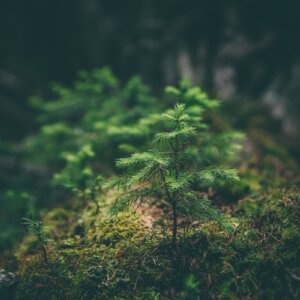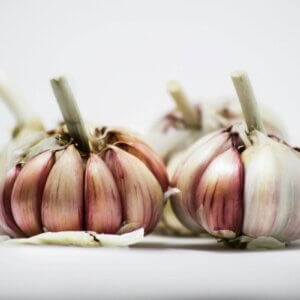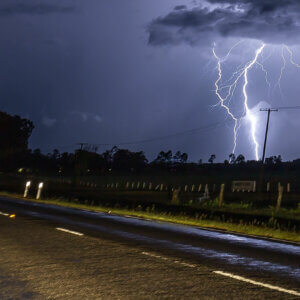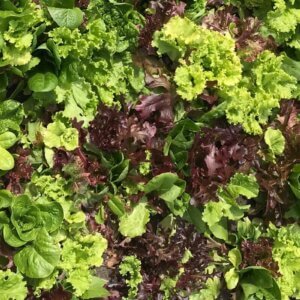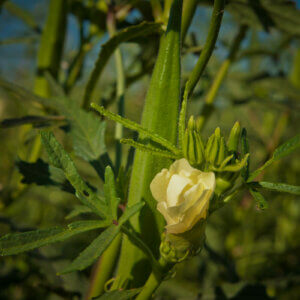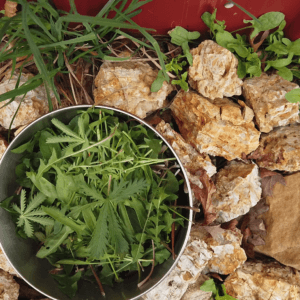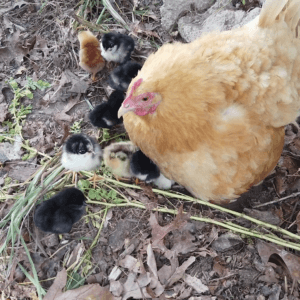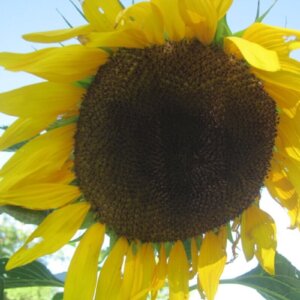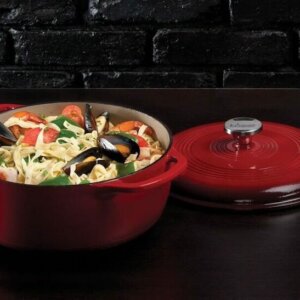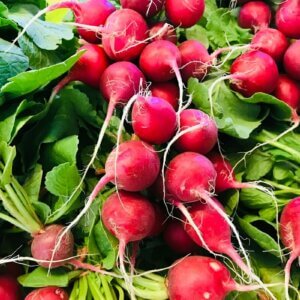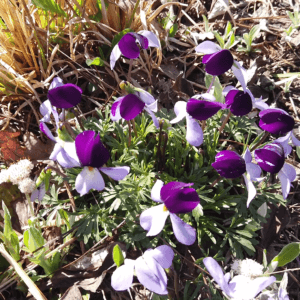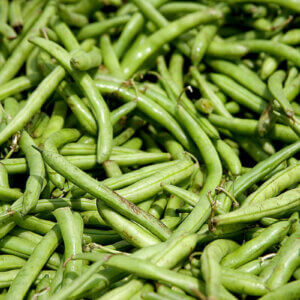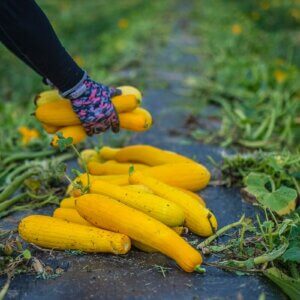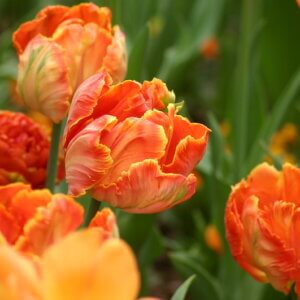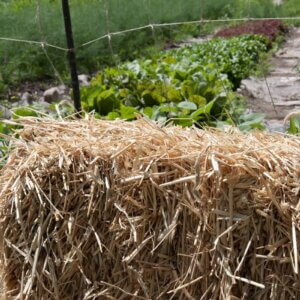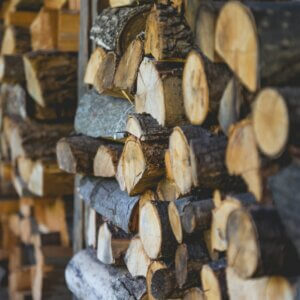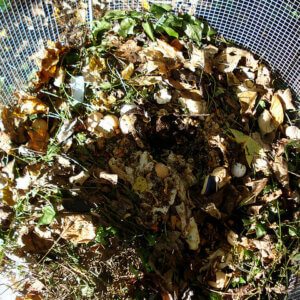Type: Annual
Region: Native in all temperate regions; found naturalized worldwide
Used For: Food, medicine, fodder
Season: Year-round, but particularly in the spring and fall
Crisp, sweetly fresh-tasting, and quite literally, growing in the cracks of the sidewalk, chickweed is a plentiful and delicious wild edible that’s usefulness is belied by its humble stature. Excellent as a salad green, medicine, and a chicken’s dinner, this tasty plant is yours for the taking—and you don’t even have to look far to find it!
Foraging For Chickweed
If you want to find one of my favorite wild edibles, all you need to do is go on a walk, anywhere. Seriously—anywhere. It doesn’t matter if you are ambling down a forest path or crossing the parking lot at your local mega-mart, you are bound to find it bursting its merry way from the ground.
Stellaria media, also known as common chickweed, seems to thrive on adversity, sprawling out of cracks in the sidewalk, bursting out from under your porch steps, or just happily spreading its dainty little leaves in the mulch around your kid’s local playground.
Related Post: Hairy Bittercress
When you do gather it—though you’ll probably find it everywhere you look—take the time to only pick it from areas that are free of pesticide and herbicide spray and don’t pick it near a roadside.
Identifying Chickweed
Chickweed is relatively easy to identify, once you have the eye for it. A rather limp, sprawling plant, it can form dense carpets over the ground. The simple, pointed leaves are paired along its rather weak stem. The bitty flowers are white, and true to their Latin name, do resemble bright little stars.
Though they only have five petals, each petal is deeply split down the center, making it look like it actually has 10. While chickweed is prime to harvest before it has put all its energy into producing flowers, it is still perfectly edible in the flowering stage—just use the tender parts of the stem, as the base near the roots may have become slightly tough by that point.
There’s not much that can be confused with this sprightly little flower, but there’s still one trick you can use to always be sure you know what you’re picking before you eat it. Specific to chickweed is a tiny little line of white hairs along the stem. Additionally, if you break the stem, you should NOT see any milky sap. If white beads of liquid emerge, go back to your resources and try to find out what plant you’re actually dealing with before you eat it.
Uses For Chickweed
If you find this persistent plant residing in your garden beds, resist the urge to tear it out! It may very well be the most useful plant in that garden bed. In gardens, it forms a dense, yet shallow-rooted layer, perfect as a living mulch. But beyond that, it is deliciously edible and powerfully medicinal. And all this from a plant that offers itself freely!
With a name like chickweed, one might assume that chickens are fond of this juicy little plant, and that assumption would be correct. If you do find yourself tearing it out of the garden bed, throw it to the chickens, and they’ll do you the favor of turning it into eggs faster than the compost pile will break it down.
Medicinally, the uses of this weed are many. It is loaded with vitamins and minerals and is the perfect tonic plant to shake you from a wintery malaise. Also, from pink-eye poultices to sore-throat treatments, this tiny plant packs a big punch. You can even pick it straight from the field, chew it up, and apply it to mosquito bites for instant relief. Famous herbalist Susun Weed recommends preserving and using it in tincture form once the season ends, as the fresh herb doesn’t really dry well.
Chickweed loves the dinner table, too. It has a fresh, crisp flavor that isn’t very strong, so it lends itself to be combined with pretty much anything. Try a chickweed frittata or throw it in your green smoothie for a treat that’s potentially even more potent and healthy than one from a juice bar, but far, far less expensive.
Wild Foraged Greensburgers
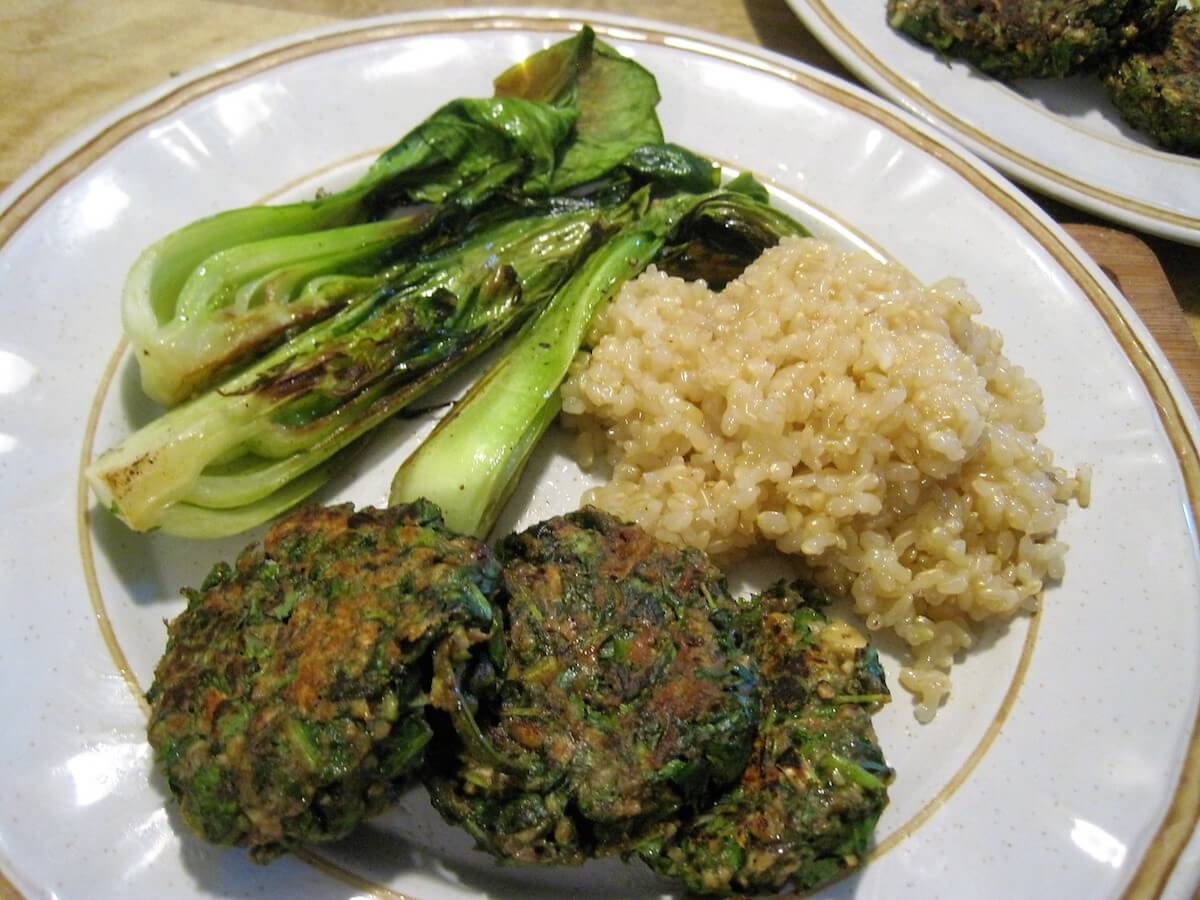
This was the first spring I’ve seen on our homestead. As green life has sprung up from the ground, I have been crouched over every new arrival with great anticipation, wondering what bounty had been tucked away under dead oak leaves all winter. To my delight, I was soon knee-deep in wild edibles, as far as my eyes could see!
Realizing I was wading through free food, I came up with this bright-tasting lunch recipe that is a fabulous way to get wild greens on the table in a jiffy. Handfuls of crisp chickweed, combined with whatever other wild greens that are sure to be growing alongside, are perfect for this recipe.
Ingredients
- Large bowlful of wild greens*, picked-through and thoroughly rinsed
- 3-5 crimini mushrooms, finely diced in a food processor
- 1 large egg or 2 smaller eggs
- Whole wheat flour
- Salt and pepper to taste
- Diced garlic, if wild garlic is not available
- Oil or butter, for frying
*Some good choices are chickweed, ramp leaves, hairy bittercress, cinquefoil leaves, violet leaves and flowers, dandelion leaves and flowers, chicory, wild garlic, or wild bergamot leaves
Directions
- Soak your collected greens in enough water for them to float—this will ensure that sand and bits of grit that are sure to cling to this low-growing herb will sink to the bottom.
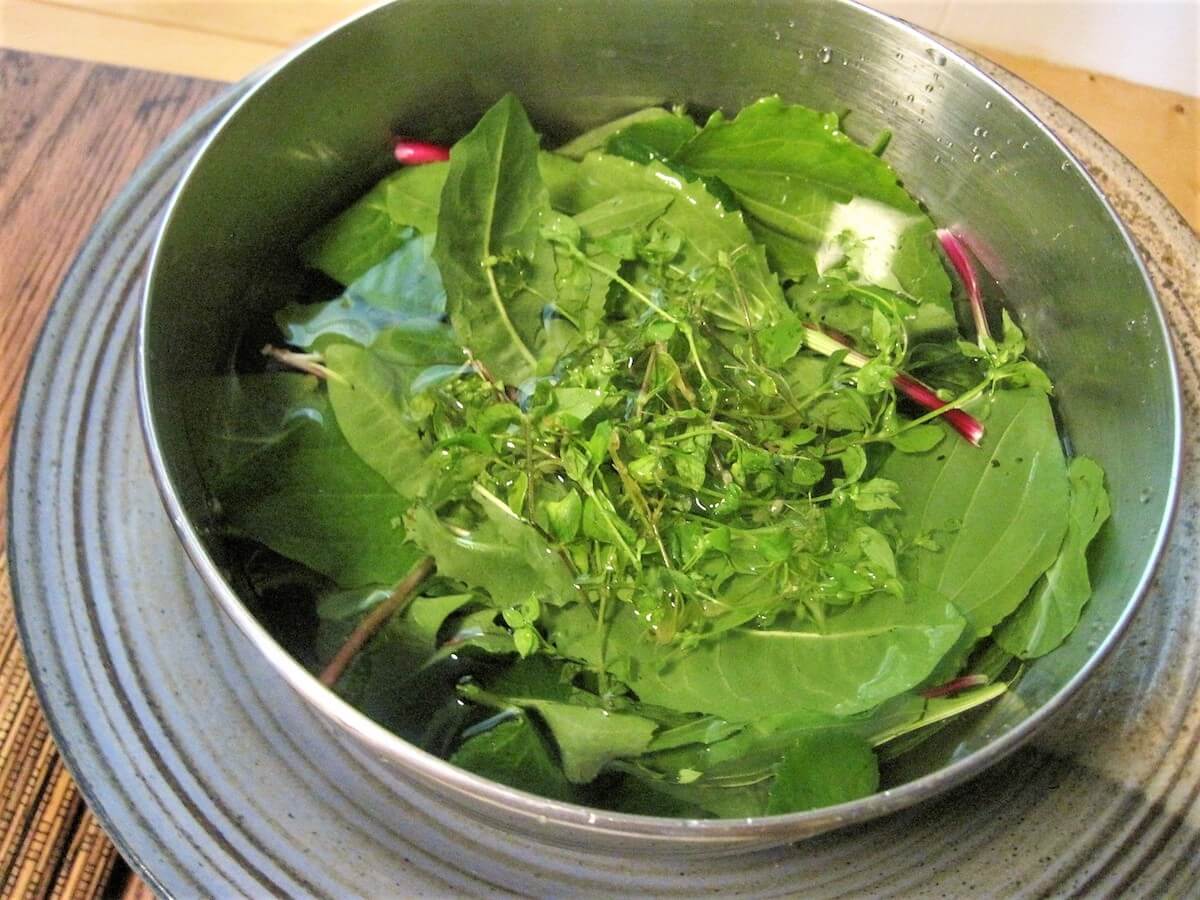
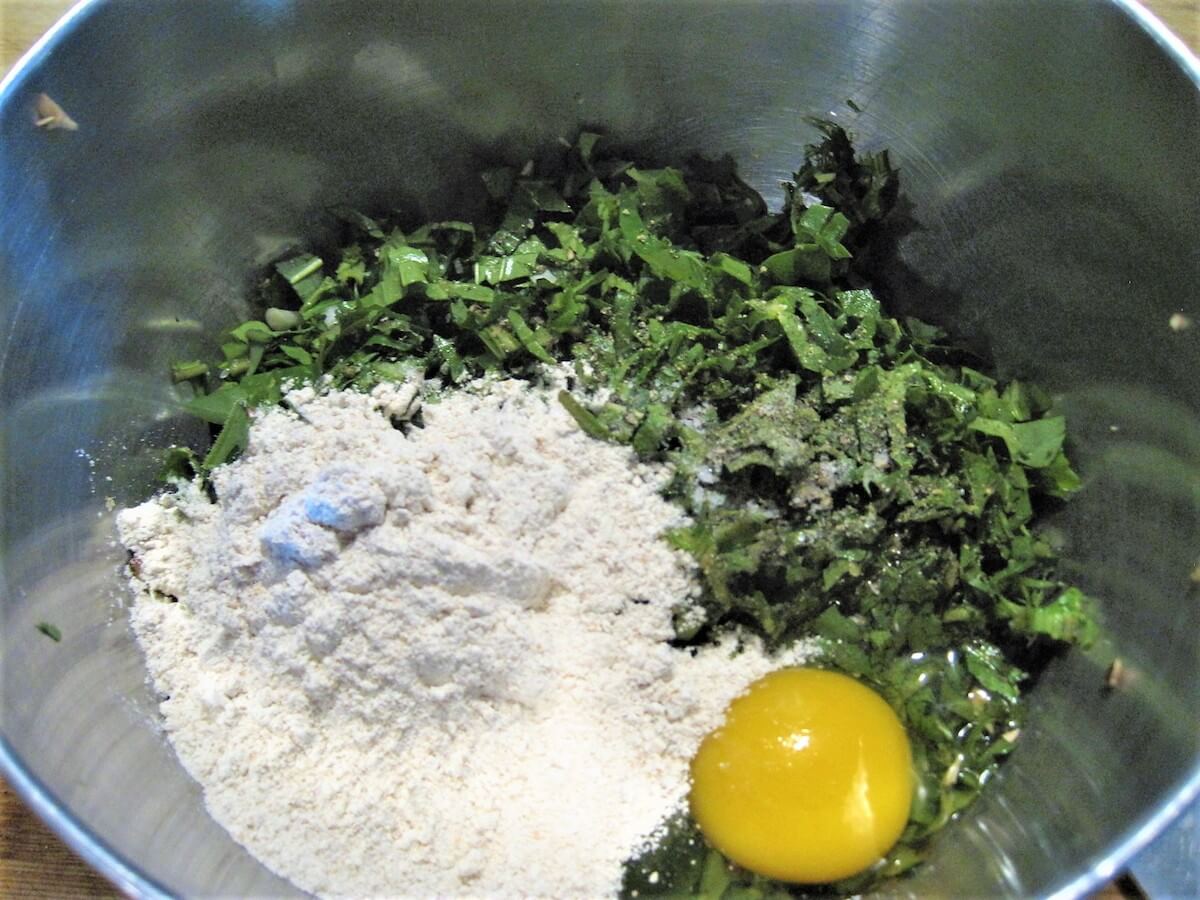
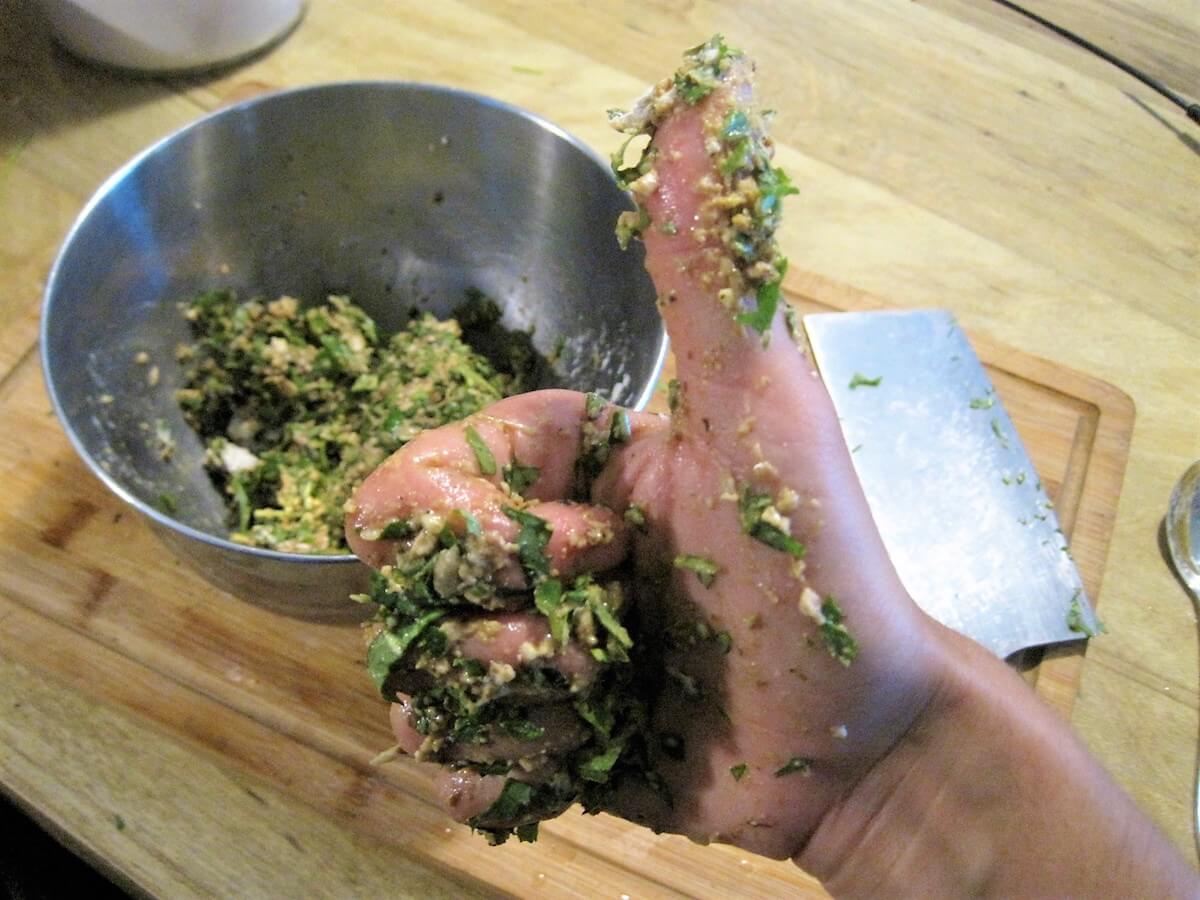
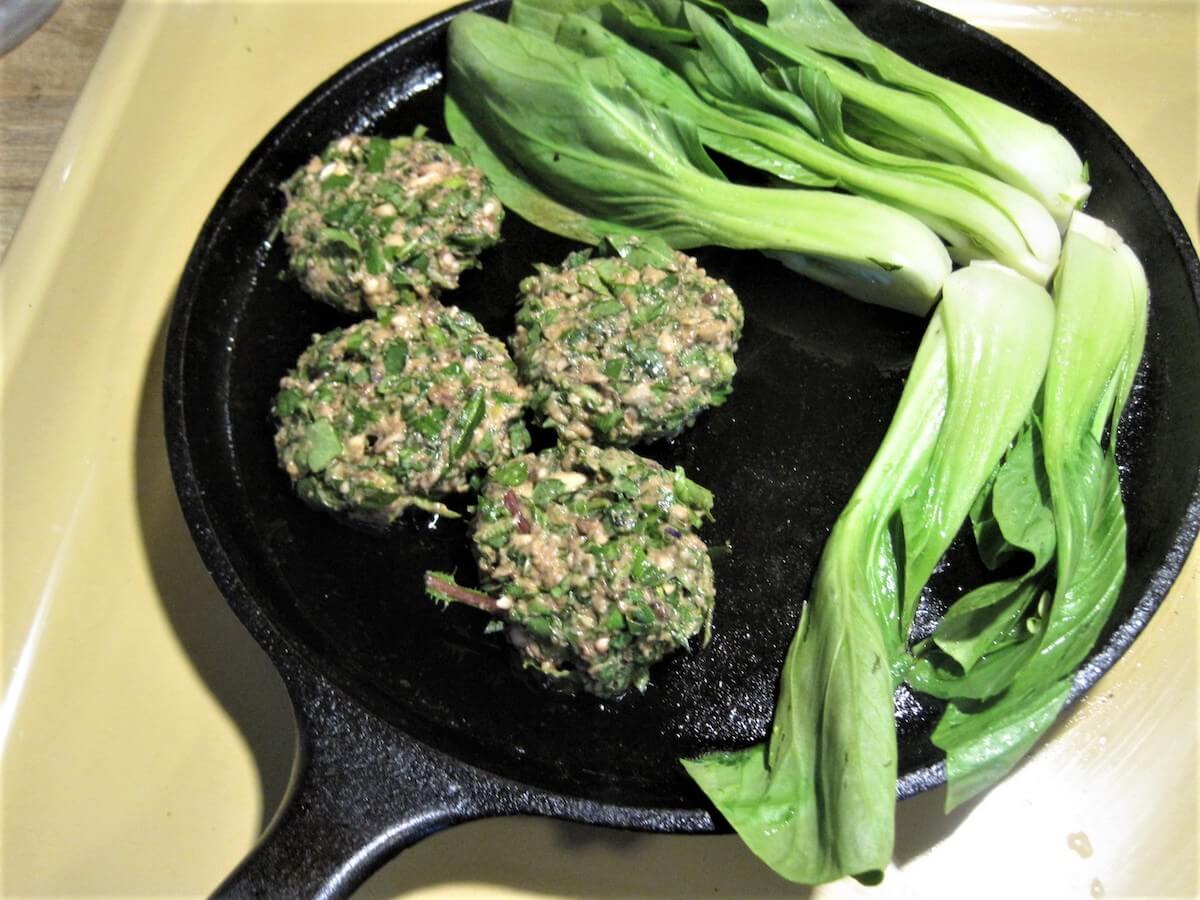
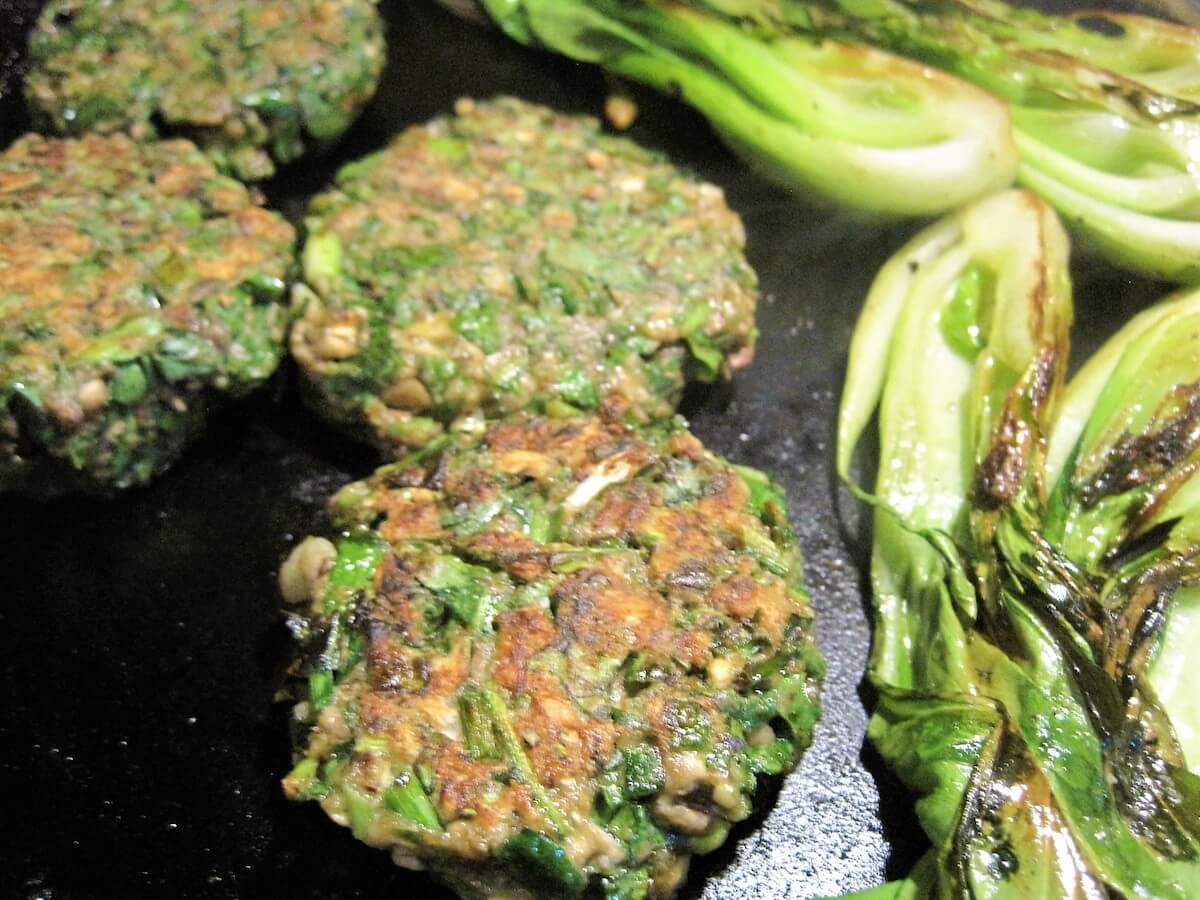
Resources:
- Incredible Wild Edibles, Samuel Thayer
- Rosemary Gladstar’s Medicinal Herbs: A Beginner’s Guide, Rosemary Gladstar
- Useful Winter Weeds: Chickweed, Bittercress and Henbit, GrowVeg
- Chickweed Herb, Alternative Nature Online Herbal
- Chickweed: Skin Rejuvenator, The Practical Herbalist
- Chickweed May Help Promote Proper Digestion and Detoxification, Mercola
- Chickweed – Health Benefits and Side Effects, Herbal Resource
- Chickweed, Botanical
- Chickweed Stellaria media, Annie’s Remedy
- Chickweed Is A Star, Su Sun Weed
- Chickweed (Stellaria media) Herbal Medicine, MedicalHealthGuide
- Common Chickweed, Garden Organic




